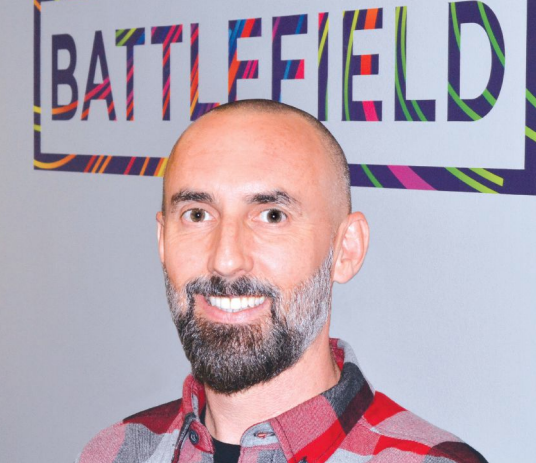
Features
People
Profiles
Spotlight: Peter Aston of Battlefield Press
July 7, 2020 By PrintAction Staff

Peter Aston is the Executive Vice President at Battlefield Press Inc., where he facilitates process improvement, change management and effective implementation of new technology. A 25-plus-year veteran of the graphic arts industry, Aston is most recognized for his 17 years with Heidelberg Canada, where he headed up the business consulting, workflow and toner-based businesses. He is a Master Black Belt in Lean Six Sigma and has been instrumental in improving the manufacturing processes and overall profitability of the clients he has worked with.
What are some of the biggest opportunities you see in the industry?
PA: At the end of the day, a sales organization’s livelihood depends on its ability to attract customers. The biggest opportunity anyone in the industry has is to understand the expectation of its customers, deliver a better than desired product on time, and produce it with a profitable return. In order to do that, one of the best starting places is to combine knowledge with technology. It is incredibly important to invest in both your people and equipment. By doing that, you are inevitably given the competitive benefit to take advantage of technological advancements and combine them with an intelligent creative team that gives the organization the capability and confidence to fill the needs of your customers.
Additionally, I think it is important to define yourself as an organization. Many organizations are focused on diversification but this can easily lead you to be a ‘master of none’; there is also the group that pushes towards working in the arena that they are only good at, leaving the door closed to change or evolution. As printers, I find that our craftsmanship is something that is too often lost. If you can find the healthy balance of performance excellence and artistry, you will have endless opportunity in the industry.
What would you say are the top challenges the industry faces?
PA: I’d break it down into a few segments: Managing expectations – as many of the buyers are looking for help from the industry when purchasing, they rely on us to guide them on what they should do to produce the product they need to buy. Within that, there are ‘just a few variables’ that we can and cannot control. Communicating and executing all of that while maintaining a valuable buying experience with the customer can be quite challenging.
Competition – the way that the market is buying print is changing. As a result, desperate times turn to desperate measures and in the case of printing, it has resulted in a race to the bottom with respect to pricing. Deciding when to join the race or sell the value for the dollar is increasingly challenging.
Operational excellence – in an industry where many organizations are vulnerable to acquisition or insolvency, if you’re not trying to achieve the highest possible net output with the best quality and consistency per cost centre, you will most likely be led to the latter. Executing and maintaining an overall equipment effectiveness that is above average is the goal, and one that we take great pride in at Battlefield Press.
How can printers be stronger print advocates?
PA: I think it starts with respect. If printers respect their work and their competitors, then they would likely not feel the need to erode the market pricing the way it has been. We need to be confident suppliers to the market and sell the value of print. I am fortunate to work with a group that is incredibly passionate about this industry. I believe if we focus our outgoing message around the products, workmanship and end-user experience, it will go a long way.
Why did you move back to the printer side of the business?
PA: When I was evaluating the next steps of my career I asked myself, “What aspects of my career are most rewarding?” There is no doubt that the most rewarding time of my career was when I was creating and producing work, so going back to the printer side wasn’t that big of a stretch for me. The opportunity to take what I’ve learned from the manufacturing side and elevate that into practice seems like the next most rewarding challenge I could face yet.
What excites you about print today?
PA: Print to most people is simply ‘ink on paper,’ but it is so much more. Print can have all kinds of embellishments that enhance its overall aesthetics, including different substrates, consumables, coatings and surface treatments, to name a few. The product is not just a flyer, book or box, it is an end-user experience with respect to how it is finished. Folding and structural design have just as much creative influence on the products that are made today. To me, one of the most exciting things happening now is the digitization — the ability to easily measure, analyze and control efficiencies throughout the process is truly incredible. This way we can continue to try to achieve operational excellence while producing intricate pieces of work.
Aston’s responses were edited for length. For more Q&A Spotlight interviews, please visit www.printaction.com/profiles.
This feature was originally published in the March 2020 issue of PrintAction, now available online.
Print this page